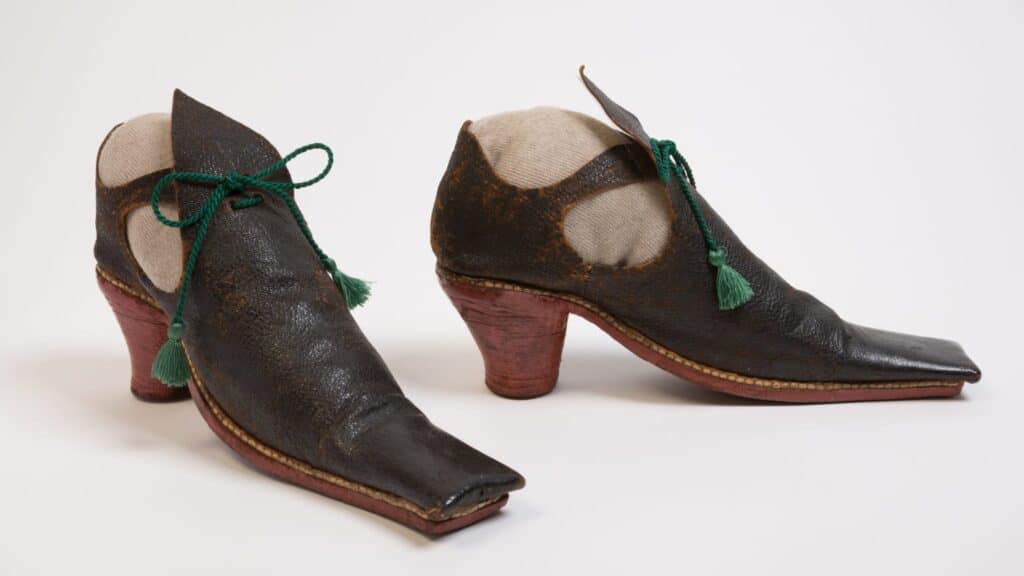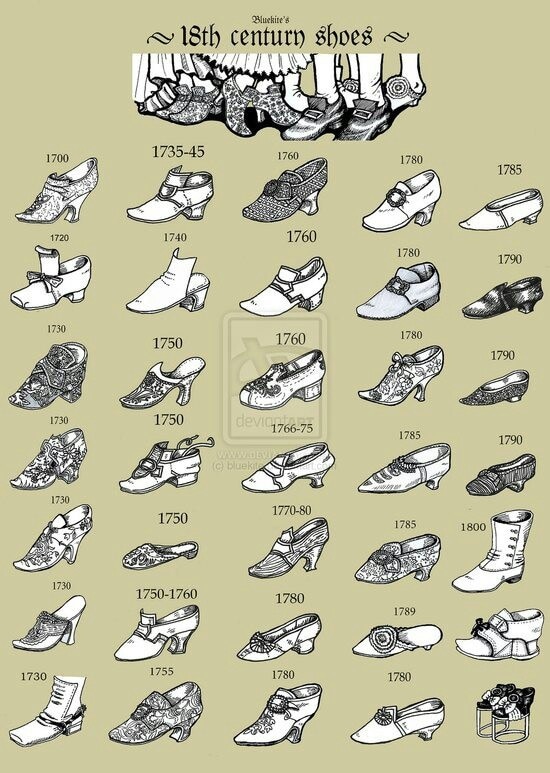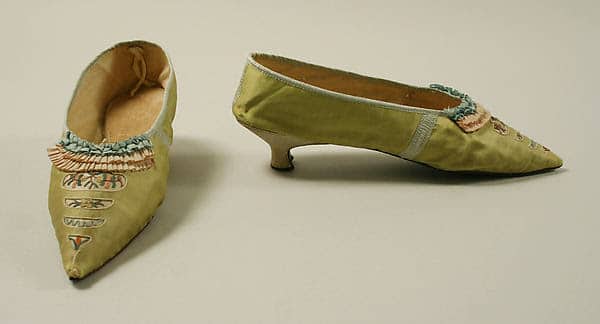High heels, synonymous with style, elegance, and power, have a fascinating history that weaves together cultural symbolism, practicality, and aesthetic allure. From their practical origins in ancient societies to their evolution into fashion statements of modern times, the story of high heels reveals much about the shifting dynamics of gender, class, and culture.
The Origins of the Heel: From Asia to Western Europe

The exact origins of the heel remain shrouded in mystery, but what is certain is that it was not a European invention. Heeled footwear first appeared in Western Europe around the early 17th century, but its use extends far earlier and farther east, originating in Western Asia, specifically Persian.
Evidence suggests that the heels were closely linked to horseback riding, specifically the innovation of the stirrup—a revolutionary advancement in equestrian technology. The stirrup transformed horseback riding, providing riders with the stability to wield weapons like bows and arrows with greater precision.
By enabling the wearer to hook their foot securely in the stirrup, the heel offered greater control and balance, further enhancing the effectiveness of mounted warriors. This innovation was a pivotal factor in making military campaigns more effective, offering riders a significant advantage in both speed and agility.
As with many inventions, the heel began with practicality but quickly gained cultural significance, transitioning from the battlefield to the courts and ultimately shaping the trajectory of fashion history in ways that continue to resonate today.
The Transformation
By the 16th century, high heels had evolved beyond their practical origins to become a hallmark of luxury and privilege. European aristocrats embraced them not for their utility but precisely for their discomfort and impracticality. To wear high heels was to flaunt one’s status; after all, only those who didn’t need to walk far could afford to don such footwear.

Later, as men increasingly focused on education and economic pursuits, rigid gender roles relegated women to the realm of emotionality and frivolity. The meaning of high heels shifted as cultural dynamics shifted. Women's desirability became tied to “foolish” fashion, and high heels transitioned into a symbol of femininity for the very reasons they once appealed to wealthy men: they were painful, impractical, and indulgent.


The Renaissance and Baroque Periods: High Heels as Status Symbols
In Renaissance Europe, high heels became a visual marker of class and privilege. King Louis XIV of France, a notable patron of the arts and fashion, popularized red-heeled shoes. These heels, exclusive to the French aristocracy, were a declaration of power and refinement. The restriction of red heels to the elite further underscored their role as a tool for asserting dominance in a rigidly hierarchical society.


Women’s heels during this era were not designed for comfort but for spectacle. They were often ornately decorated with embroidery, jewels, and rich fabrics, transforming footwear into works of art. Heels became a key feature of courtly fashion, where appearance was central to social mobility.
18th-Century Women’s High Heels: Elegance and Symbolism




By the 18th century, heels began to fall out of favor among men, who adopted simpler, more practical footwear reflective of Enlightenment ideals. High heels became increasingly associated with femininity, reinforcing gender roles and expectations of beauty that reflected the cultural values of a society obsessed with grace, decorum, and hierarchy.
Design and Craftsmanship

18th-century women’s high heels were marvels of craftsmanship. Typically made from silk, brocade, or embroidered leather, they were adorned with intricate patterns, bows, and even jewels.
The colors were vibrant and whimsical, often reflecting the popular Rococo aesthetic with pastel hues and floral motifs.




Heels were carefully shaped, with a curved, tapering structure known as the "Louis heel," named after King Louis XIV of France, who popularized the style. These heels, standing at an average height of two to three inches, emphasized the arch of the foot and created an elegant posture, symbolizing refinement and beauty.
Symbol of Status and Femininity




High heels during this era were not designed for comfort or practicality. Instead, they served as a statement of wealth and social standing. Only those of the upper classes, who lived lives of leisure, could afford to prioritize fashion over function. A pair of finely made heels conveyed not only financial power but also cultural sophistication.
Moreover, heels were a marker of femininity, embodying the societal ideals of grace and delicacy. The restricted mobility imposed by these shoes further reinforced traditional gender roles, as women wearing them were often confined to salons, gardens, and other sophisticated settings.
The Influence of French Fashion




France, under the reign of Louis XV and Louis XVI, was the epicenter of 18th-century fashion, and Parisian styles dominated the courts and aristocracies of Europe. French shoemakers like François Pinet created some of the most exquisite high heels of the time, catering to the demands of royals and nobles.
Marie Antoinette, the ill-fated queen of France, famously embraced the extravagance of high-heeled footwear. Her collection included elaborately designed shoes with heels as high as four inches, pushing the boundaries of both style and practicality. Her lavish tastes, while admired, also drew criticism and became symbolic of the disconnect between the aristocracy and the working classes.
Decline During the Revolution

The French Revolution of 1789 marked a dramatic shift in the fate of high heels. As the aristocracy fell out of favor, so too did their elaborate fashions. The heels, once a proud symbol of privilege, became associated with the extravagance and inequality of the ancien régime.
Simpler, more practical footwear emerged as egalitarian ideals took hold.
However, the influence of 18th-century high heels endured, inspiring later designers to revisit the elegance and drama of this iconic period in footwear history.
Heels in The Victorian Era: Elegance and Modesty


Women’s high heels in the Victorian era were deeply intertwined with the social and cultural values of the time. Representing modesty, femininity, and class, these shoes played a significant role in shaping the image of the Victorian woman.
While the designs may have been less extravagant than those of earlier periods, Victorian high heels embodied an understated elegance that reflected the era’s ideals and the evolving role of women in society.
Design and Functionality

Victorian high heels were typically modest in height, usually ranging from one to two inches. Unlike the flamboyant heels of the 18th century, these shoes were more understated, focusing on creating a refined and ladylike silhouette rather than making a bold statement.
The heels were often part of boots or closed-toe shoes, which provided coverage and conformed to the era’s emphasis on modesty.
Materials like leather, satin, and kid suede were commonly used, and embellishments, while present, were subtle—buttons, lace trim, or delicate embroidery added elegance without excess.
The curved "Louis heel," persisted but was adapted to suit the more conservative aesthetic of the Victorian period. Shoes were often designed with a narrow, pointed toe and an arched sole, creating a dainty and elongated appearance that emphasized a woman’s small, delicate feet—an ideal of Victorian beauty.
The design of these shoes also served to highlight Victorian ideals of femininity. The restrictive nature of high-heeled footwear, combined with the fashionable corsets of the time, contributed to the carefully cultivated image of women as graceful, fragile, and dependent on male protection.
The Advent of the Industrial Revolution
The Industrial Revolution played a significant role in the development and accessibility of Victorian footwear. Advances in manufacturing meant that high heels, once the domain of the aristocracy, could be mass-produced, making them available to a wider audience. Middle-class women began to adopt high-heeled shoes, often styled after the more luxurious designs worn by the upper classes.
With the rise of department stores and mail-order catalogs, women could purchase a variety of high-heeled styles, from practical boots to elegant evening shoes. This democratization of fashion allowed high heels to become a staple of women’s wardrobes across different social strata.
Changing Trends
By the late Victorian period, more elaborate styles emerged, particularly for evening wear. Satin pumps and slippers with small heels became popular for formal occasions, reflecting the growing emphasis on social appearances.
The increasing mobility of women also influenced shoe design. While high heels remained a symbol of refinement, the demand for more functional footwear grew as women participated in activities like walking, cycling, and sports, paving the way for the more practical shoes of the Edwardian era.
The 20th Century: The Reinvention of High Heels
The 20th century witnessed the democratization of high heels, as industrial advances made them more accessible. Designers like Salvatore Ferragamo and Roger Vivier pushed the boundaries of heel design, experimenting with materials, heights, and styles.
During the 1950s, stilettos emerged as the epitome of femininity and glamour. With their slender heels and pointed toes, they became synonymous with the pin-up era and Hollywood starlets. Iconic figures like Marilyn Monroe elevated stilettos to a symbol of seduction and empowerment, reclaiming the heel as a statement of independence.

The late 20th century brought about further innovation and experimentation. Designers like Christian Louboutin and Manolo Blahnik turned heels into symbols of luxury and artistry. Red soles, jeweled embellishments, and towering heights became defining features of modern high fashion.
Contemporary Perspectives: Style, Power, and Identity
Today, high heels continue to be a potent symbol of self-expression, often transcending traditional notions of gender and class. In the workplace, they remain a staple of professional attire, signaling confidence and authority. At the same time, high heels have become a point of contention in conversations about gender norms and societal expectations.
In recent years, designers have embraced inclusivity and comfort, creating block heels, kitten heels, and other styles that cater to diverse needs and preferences. High heels have also entered the realm of streetwear, where they are paired with casual outfits, breaking free from their historical associations with formality.
Through the History of High Heels
High heels have traced an extraordinary journey through time, from their origins in Western Asia as practical tools for horseback riding to their transformation into potent symbols of power, status, and elegance.
Introduced to Europe during the Renaissance, heels quickly became emblems of aristocratic privilege, their height and decoration reflecting wealth and exclusivity. The 18th century saw their elaboration into ornate works of art, while the Victorian era tempered their designs to align with the era’s ideals of modesty and propriety.
In modern times, high heels have transcended their historical confines, becoming versatile icons of self-expression. They project confidence and authority in professional arenas, celebrate individuality on runways and red carpets, and challenge traditional norms across gender and cultural boundaries.
Designers today continue to innovate, blending comfort with inclusivity while honoring the legacy of this timeless footwear. Through their evolution, high heels have mirrored the shifting aspirations and identities of those who wear them, standing as enduring symbols of fashion’s ability to shape and reflect the human experience.

